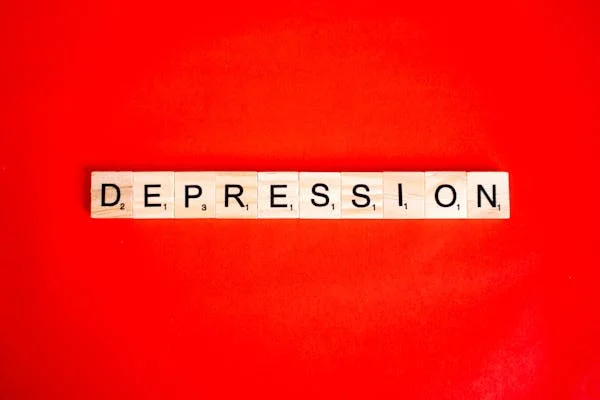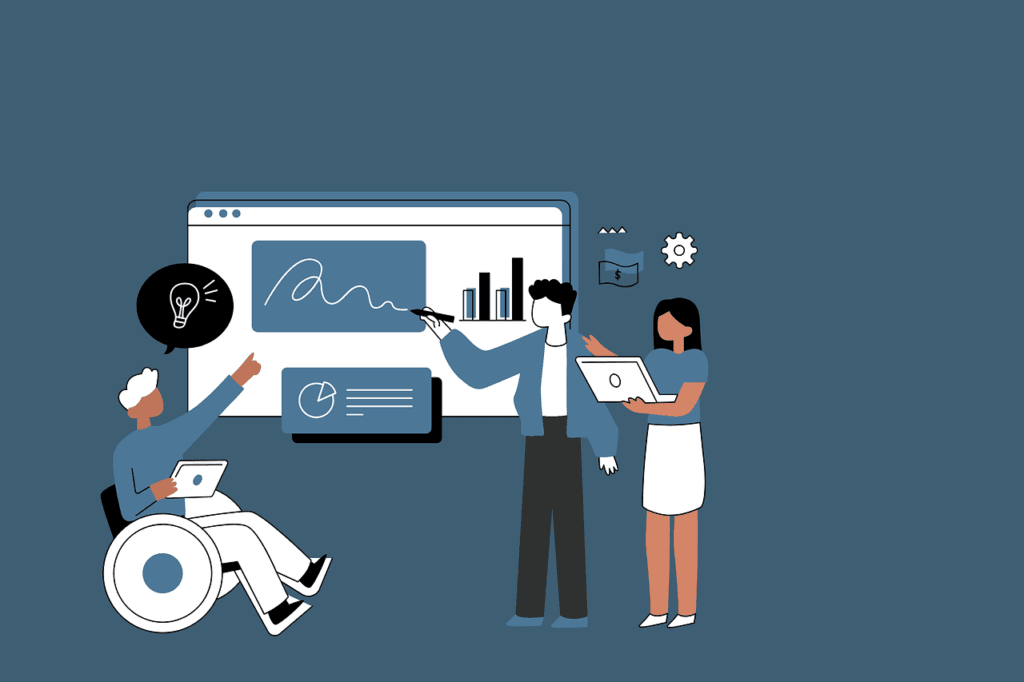Mental health awareness is more important now than ever before. With the rise of social media, we have a unique opportunity to spread positive messages, share valuable resources, and foster a supportive community. This article explores inspiring social media post ideas to help you engage your audience and promote mental health awareness effectively.
The Power of Personal Stories

Crafting a Compelling Narrative
Authenticity is key when sharing personal stories. As a startup founder, being transparent about your mental health journey can humanize your brand and build trust with your audience. It’s essential to develop a compelling narrative that connects your personal story with your brand’s mission. Share the highs and lows, the challenges and triumphs, and how these experiences have shaped you and your startup. Use visuals to enhance your storytelling. Incorporate photos, videos, and infographics that illustrate your journey and the lessons learned. This can make your content more engaging and relatable.
Hosting Interactive Sessions
Host live sessions where you discuss your story and answer questions from your audience. This real-time interaction can create a deeper connection and foster a sense of community. Encourage your followers to share their stories during these sessions as well, creating a platform for mutual support and understanding.
Featuring Diverse Voices
Diversity in storytelling can amplify the impact of your message. Invite team members, partners, or customers to share their mental health journeys on your platform. This not only provides varied perspectives but also demonstrates that mental health issues affect everyone, regardless of their background or role. By featuring these stories, you can foster a more inclusive and supportive community.
Integrating Storytelling into Your Brand
Integrate personal storytelling into your brand’s overall content strategy. Share regular updates on your mental health journey and how you manage stress and challenges as a founder. This ongoing narrative can help keep your audience engaged and invested in your story.
Additionally, consider creating a dedicated section on your website or social media profiles where these stories are highlighted. This can serve as a valuable resource for your audience and show your commitment to mental health awareness.
Encouraging Employee Stories
Encourage your team to share their mental health stories as well. This can create a culture of openness and support within your startup. Highlighting employee stories can also show your audience that your company values mental health and supports its employees. This can enhance your brand’s reputation and attract talent who prioritize mental wellness.
Utilizing User-Generated Content
Leverage user-generated content to expand the reach of personal stories. Encourage your followers to share their mental health journeys using a specific hashtag associated with your brand. Repost these stories on your platforms, giving your audience a voice and fostering a community of support and understanding. This can also help you reach new audiences who relate to the shared experiences.
Measuring Impact and Engagement
Track the engagement and impact of the personal stories you share. Use analytics tools to measure likes, shares, comments, and other forms of engagement. This data can help you understand what resonates with your audience and adjust your strategy accordingly. Highlight the most impactful stories and consider doing follow-up posts to delve deeper into specific topics that generated significant interest.
Partnering with Mental Health Organizations
Collaborate with mental health organizations to lend more credibility to your stories and provide additional resources for your audience. Partnering with these organizations can help you share more comprehensive and accurate information about mental health. It can also show your audience that your commitment to mental health awareness goes beyond storytelling and into actionable support.
Encouraging User-Generated Content
User-generated content (UGC) is a powerful tool for startup founders to enhance mental health awareness campaigns. It fosters a sense of community, increases engagement, and provides authentic content that resonates with your audience. Here’s how to strategically encourage and leverage user-generated content:
Creating a Campaign with a Purpose
Start by creating a campaign that has a clear and compelling purpose. Define the goals of your campaign, such as raising awareness about a specific mental health issue, encouraging self-care practices, or promoting mental health resources. Clearly communicate this purpose to your audience and explain how their participation can make a difference. When people understand the impact they can have, they are more likely to contribute their own stories and experiences.
Developing a Unique Hashtag
Develop a unique and memorable hashtag that your audience can use when sharing their content. A well-crafted hashtag makes it easy for people to participate and for you to track the contributions. Ensure that the hashtag reflects the core message of your campaign and is simple enough for people to remember and use. Promote this hashtag across all your social media channels and encourage your followers to use it when posting about their mental health journeys.
Offering Incentives and Recognition
People are more likely to participate in your UGC campaign if they feel appreciated. Offer incentives such as shout-outs, feature posts, or even small prizes to those who share their stories. Highlighting user content on your official channels not only gives recognition but also motivates others to join in. Consider creating a dedicated “User Spotlight” section on your website or social media profiles where you regularly feature stories shared by your followers.
Providing Clear Guidelines
To ensure the content aligns with your campaign’s goals, provide clear guidelines for participation. Explain what kind of stories or experiences you are looking for, how they should be shared, and how the content will be used. This can include instructions on using the campaign hashtag, tagging your brand, or specific themes you want participants to focus on. Clear guidelines help maintain the quality and relevance of the user-generated content.
Creating Engaging Prompts
Engage your audience by providing prompts that encourage them to share specific aspects of their mental health journey. Prompts like “Share a self-care tip that has worked for you” or “Describe a time when you overcame a mental health challenge” can inspire people to contribute meaningful content. Regularly updating these prompts can keep the campaign fresh and continuously encourage participation.
Fostering a Supportive Environment
Create a supportive environment where users feel safe and valued sharing their personal stories. Monitor and moderate your social media channels to ensure that the shared content and discussions remain respectful and positive. Engage with the content by commenting, liking, and sharing, which shows your appreciation and fosters a sense of community.
Collaborating with Influencers and Partners
Partner with influencers and mental health organizations to amplify your UGC campaign. Influencers can encourage their followers to participate, bringing more visibility and credibility to your campaign. Collaborations with mental health organizations can provide additional resources and support, making your campaign more robust and impactful.
Analyzing and Sharing Results
Track the success of your UGC campaign through analytics. Measure engagement metrics such as the number of posts using your hashtag, likes, shares, and comments. Analyze the feedback and content shared to understand what resonates most with your audience. Share the results of the campaign with your followers to show the collective impact of their contributions. Highlighting the success and positive outcomes can motivate continued participation and support.
Turning UGC into Long-Term Content
Leverage the user-generated content for long-term use. Compile the stories and experiences shared into blog posts, e-books, or video series. This not only extends the life of the content but also provides valuable resources for your audience. Ensure to credit the original creators and thank them for their contributions.
Partnering with Mental Health Advocates
Partnering with mental health advocates can significantly enhance the reach and impact of your mental health awareness campaigns. As a startup founder, leveraging these partnerships strategically can help build credibility, increase engagement, and provide your audience with valuable insights and resources. Here’s how to do it effectively:
Identifying the Right Advocates
Start by identifying mental health advocates who align with your brand’s values and mission. Look for individuals who have a genuine passion for mental health awareness and a strong, engaged following. These advocates could be mental health professionals, influencers, or individuals with lived experiences who actively share their stories and support others.
Research their past collaborations, the type of content they produce, and their audience demographics to ensure they are a good fit for your campaign. A well-aligned advocate can bring authenticity and a trusted voice to your initiative, making it more impactful.
Building Genuine Relationships
Building a genuine relationship with mental health advocates is crucial for a successful partnership. Reach out to them with a personalized message that explains why you admire their work and how you believe a collaboration could benefit both parties. Be transparent about your campaign goals and what you hope to achieve together.
Show appreciation for their expertise and offer them value in return. This could be through exposure on your platform, financial compensation, or access to your product or service. A mutually beneficial relationship fosters long-term partnerships and ensures that the advocate is genuinely invested in your campaign.
Co-Creating Content
Work closely with mental health advocates to co-create content that resonates with your audience. This could include joint live sessions, collaborative blog posts, or shared social media campaigns. Co-creating content ensures that the advocate’s voice and expertise are authentically integrated into your campaign.
For example, you could host a live Q&A session where the advocate answers questions from your audience about mental health. Alternatively, you could collaborate on a series of posts that share practical mental health tips and personal stories. This approach not only enriches your content but also provides valuable insights and diverse perspectives.
Leveraging Cross-Promotion
Maximize the reach of your campaign by leveraging cross-promotion. Encourage the mental health advocate to share the collaborative content on their own channels, tagging your brand and using your campaign hashtags. This cross-promotion exposes your campaign to a wider audience and lends credibility through the advocate’s endorsement.
You can also feature the advocate on your platforms, highlighting their contributions and promoting their work. This reciprocal promotion builds a stronger partnership and helps both parties reach new audiences.
Hosting Webinars and Workshops
Consider hosting webinars and workshops with mental health advocates as guest speakers. These events can provide in-depth knowledge and practical advice on mental health topics relevant to your audience. Promote these events through your social media channels and encourage registrations.
During the webinars or workshops, allow time for interactive Q&A sessions where attendees can ask the advocate questions. This direct interaction adds value to your audience and demonstrates your commitment to providing expert-led mental health resources.
Creating Advocate Takeovers
Allow mental health advocates to take over your social media channels for a day or a week. During this takeover, they can share their own content, engage with your audience, and provide valuable mental health insights. This not only brings fresh content to your platform but also gives your audience a new perspective.
Promote the takeover in advance to build anticipation and ensure your followers are aware of the special event. Advocate takeovers can significantly boost engagement and provide a unique opportunity for your audience to connect with a mental health expert.
Measuring and Showcasing Impact
Track the impact of your partnerships with mental health advocates by measuring engagement metrics such as likes, shares, comments, and follower growth. Analyze the feedback and interactions to understand what content resonates most with your audience.
Showcase the success of these partnerships through case studies, testimonials, and summary posts. Highlighting the positive outcomes and the value brought by the advocate can reinforce the effectiveness of your campaign and encourage continued support and participation.
Long-Term Collaborations
Consider establishing long-term collaborations with mental health advocates. Consistent partnerships can provide ongoing value to your audience and strengthen the advocate’s association with your brand. Regularly feature them in your campaigns, events, and content to maintain a continuous presence and keep mental health awareness at the forefront of your brand’s mission.
Partnering with mental health advocates is a strategic move that can amplify your message and provide your audience with expert guidance and support. By building genuine relationships, co-creating content, and leveraging cross-promotion, you can create impactful mental health awareness campaigns that resonate with your audience and foster a supportive community.
Measuring Impact and Engagement
Measuring the impact and engagement of your mental health awareness campaigns is crucial for understanding their effectiveness and optimizing future initiatives. As a startup founder, having a strategic approach to analytics can provide actionable insights to enhance your social media strategy. Here’s how to measure impact and engagement effectively:
Setting Clear Objectives and KPIs
Before you can measure the impact of your campaign, it’s essential to set clear objectives and key performance indicators (KPIs). Define what success looks like for your mental health awareness campaign. This could include increased engagement, higher reach, more user-generated content, or greater website traffic.
Identify specific KPIs that align with these objectives. For example, if your goal is to increase engagement, track metrics such as likes, shares, comments, and video views. If your aim is to raise awareness, focus on reach, impressions, and follower growth. Having clear objectives and KPIs provides a benchmark against which you can measure your campaign’s performance.
Utilizing Advanced Analytics Tools
Leverage advanced analytics tools to gain deeper insights into your campaign’s performance. Platforms like Google Analytics, social media insights, and third-party tools like Hootsuite or Sprout Social offer comprehensive data tracking and analysis.
Use these tools to monitor real-time data and track your KPIs. Analyze trends and patterns to understand which content performs best and why. For instance, if posts with personal stories receive higher engagement, consider incorporating more of this content into your strategy. Advanced analytics tools can also provide demographic information, helping you understand your audience better and tailor your content accordingly.
Conducting A/B Testing
A/B testing is a powerful method to determine what content resonates most with your audience. Create two versions of a post with slight variations, such as different headlines, images, or calls to action, and share them with different segments of your audience.
Monitor the performance of each version to see which one drives more engagement or achieves your desired outcome. Use these insights to refine your content strategy, focusing on the elements that perform best. Regular A/B testing can lead to continuous improvement and optimization of your campaigns.
Gathering Qualitative Feedback
In addition to quantitative data, qualitative feedback can provide valuable insights into the impact of your campaigns. Encourage your audience to share their thoughts and experiences related to your mental health awareness initiatives.
Conduct surveys or polls to gather feedback on what they found most helpful or inspiring. Read through comments and messages to understand the sentiment and identify common themes. This qualitative data can highlight the emotional and psychological impact of your campaign, offering a deeper understanding of its effectiveness.
Monitoring Social Listening
Social listening involves tracking mentions, keywords, and trends related to your campaign across social media platforms. This allows you to gauge public perception and understand how your message is resonating beyond direct engagement metrics.
Use social listening tools to monitor discussions about your campaign, your brand, and mental health topics in general. Identify any spikes in mentions or sentiment changes that correlate with your campaign activities. This real-time feedback can help you adjust your strategy quickly and address any concerns or opportunities that arise.
Analyzing Engagement Over Time
Track engagement metrics over time to identify long-term trends and patterns. Analyze how different types of content perform at various times and during specific events or awareness days. Look for correlations between your campaign activities and engagement spikes.
This temporal analysis can reveal insights into the best times to post, the most effective content types, and the overall growth of your campaign. Use these insights to plan future content and campaigns strategically, ensuring maximum impact and engagement.
Reporting and Sharing Results
Create detailed reports that summarize the performance of your mental health awareness campaigns. Include key metrics, qualitative feedback, and insights gained from your analysis. Share these reports with your team, stakeholders, and even your audience to demonstrate the impact of your efforts.
Highlight successes and areas for improvement, and outline actionable steps for future campaigns. Transparency in reporting builds trust with your audience and stakeholders and showcases your commitment to mental health awareness.
Iterating and Optimizing Campaigns
Use the insights gained from your measurement and analysis to iterate and optimize your campaigns continuously. Experiment with new content formats, posting schedules, and engagement strategies based on your findings.
Regularly review your objectives and KPIs to ensure they remain aligned with your overall goals. Stay agile and adaptable, making data-driven decisions to enhance the effectiveness of your mental health awareness initiatives.
Measuring impact and engagement is not a one-time task but an ongoing process that informs your social media strategy. By setting clear objectives, leveraging advanced tools, and analyzing both quantitative and qualitative data, startup founders can create highly effective mental health awareness campaigns that resonate with their audience and drive meaningful engagement.

Creating Educational Content
Educational content is essential for raising mental health awareness and providing valuable information to your audience. As a startup founder, strategically creating and sharing educational content can position your brand as a reliable source of mental health knowledge and support. Here’s how to approach this effectively:
Developing Comprehensive Guides
Create comprehensive guides on various mental health topics. These guides can cover everything from understanding different mental health conditions to practical tips for managing stress and anxiety. Break down complex information into simple, easy-to-understand language to ensure it is accessible to a wide audience.
For example, develop a series of guides that focus on different aspects of mental health, such as “A Beginner’s Guide to Mindfulness,” “Understanding Depression and How to Seek Help,” or “Effective Stress Management Techniques for Busy Professionals.” These guides can be shared as blog posts, downloadable PDFs, or social media carousel posts.
Utilizing Video Content
Video content is highly engaging and can be an effective way to educate your audience about mental health. Create a series of short, informative videos that address common mental health questions, provide tips, or debunk myths.
Consider featuring mental health professionals in your videos to add credibility. You can also use animations to explain complex concepts in an engaging and visually appealing way. Share these videos on platforms like YouTube, Instagram, and TikTok to reach a broader audience.
Hosting Webinars and Live Sessions
Host webinars and live sessions on mental health topics relevant to your audience. Invite mental health experts to speak and provide their insights. These sessions can cover a wide range of topics, such as “Coping Strategies for Anxiety,” “The Importance of Mental Health in the Workplace,” or “How to Support a Loved One with Mental Health Issues.”
Promote these events in advance and encourage your audience to register and participate. During the sessions, allow time for Q&A to address specific concerns and provide personalized advice. Recording these sessions and sharing them later can also extend their reach and impact.
Creating Infographics and Visual Content
Infographics are an excellent way to present educational content in a visually engaging and easily digestible format. Design infographics that highlight key statistics, tips, or steps related to mental health topics.
For instance, you could create infographics that show “10 Ways to Improve Your Mental Health,” “Signs of Burnout to Watch For,” or “How to Practice Self-Care Daily.” Share these infographics on social media platforms like Pinterest, Instagram, and LinkedIn to maximize visibility and engagement.
Sharing Real-Life Examples and Case Studies
Real-life examples and case studies can make educational content more relatable and impactful. Share stories of individuals who have successfully managed their mental health or overcome challenges. Highlight the strategies and resources they used, and the positive outcomes they achieved.
For example, feature case studies of how mindfulness helped employees in a high-stress startup environment or how therapy and support groups benefited someone with anxiety. These stories can inspire and educate your audience, showing them practical applications of mental health strategies.
Collaborating with Experts
Collaborate with mental health experts to create high-quality educational content. This could include interviews, guest blog posts, or joint webinars. Experts can provide valuable insights, lend credibility to your content, and help you reach a wider audience.
For example, you could interview a psychologist about coping mechanisms for stress or have a guest post from a psychiatrist on the importance of seeking professional help for mental health issues. These collaborations can enrich your content and provide your audience with reliable information.
Creating a Resource Library
Develop a resource library on your website where users can access a variety of educational materials. This library can include articles, guides, videos, infographics, and links to external resources such as mental health hotlines and support organizations.
Regularly update the library with new content and ensure it is easy to navigate. Promote this resource library through your social media channels to provide ongoing support and information to your audience.
Encouraging Interactive Learning
Engage your audience through interactive content such as quizzes, polls, and interactive infographics. These tools can make learning about mental health more engaging and personalized.
For example, create a quiz that helps users identify their stress triggers or a poll that asks about their preferred self-care activities. Interactive content can increase engagement and provide valuable insights into your audience’s needs and preferences.
By strategically creating and sharing educational content, startup founders can effectively raise mental health awareness and provide valuable support to their audience. This approach not only enhances your brand’s reputation but also fosters a more informed and supportive community.
Collaborating with Influencers

Collaborating with influencers can significantly amplify your mental health awareness campaigns, providing you with a wider reach and enhanced credibility. As a startup founder, strategically partnering with influencers can help you engage a broader audience and deliver impactful messages. Here’s how to do this effectively:
Identifying the Right Influencers
Start by identifying influencers who align with your brand values and have a genuine interest in mental health awareness. Look for influencers who have a strong, engaged following and a track record of promoting mental health topics authentically. Use social media listening tools to discover influencers who are already discussing mental health issues and have a positive reputation in the community.
Analyze their audience demographics, engagement rates, and content style to ensure they are a good fit for your campaign. Collaborating with influencers who share your mission and values will ensure that their endorsement resonates with their followers and adds credibility to your message.
Crafting a Collaborative Strategy
Once you’ve identified potential influencers, develop a collaborative strategy that outlines your campaign goals, key messages, and the roles of each partner. Clearly communicate your expectations and provide influencers with the creative freedom to share their personal connection to mental health.
Create a content calendar that includes important dates, such as Mental Health Awareness Month or World Mental Health Day, and plan collaborative activities around these dates. This strategic approach ensures that your campaign is well-coordinated and impactful.
Creating Authentic Content
Authenticity is crucial when discussing mental health. Work with influencers to create content that feels genuine and relatable. Encourage them to share their personal experiences, struggles, and coping strategies. This can include heartfelt posts, videos, or live sessions where they discuss their journey and offer advice.
For instance, an influencer might share a personal story about overcoming anxiety and the steps they took to manage it. By being vulnerable and open, influencers can create a strong emotional connection with their audience and foster a supportive community.
Leveraging Different Content Formats
Utilize various content formats to keep your campaign dynamic and engaging. Collaborate with influencers to create a mix of content, including Instagram Stories, IGTV videos, YouTube vlogs, blog posts, and podcasts. Each format has its strengths and can reach different segments of your audience.
For example, Instagram Stories and IGTV videos are great for quick, engaging content, while YouTube vlogs and blog posts can provide more in-depth information. Podcasts can offer intimate, long-form discussions that allow influencers to delve deeper into mental health topics.
Hosting Joint Live Events
Live events are a powerful way to engage your audience in real-time. Host joint live sessions with influencers where they can answer questions, share their stories, and provide mental health tips. Promote these events in advance to build anticipation and ensure a large turnout.
During the live sessions, encourage interaction by allowing viewers to ask questions and share their own experiences. This real-time engagement can create a sense of community and provide immediate support and resources to those in need.
Running Social Media Takeovers
Allow influencers to take over your social media accounts for a day or a week. During this takeover, they can share their content, engage with your followers, and promote mental health awareness. This not only brings fresh perspectives to your platform but also introduces your brand to the influencer’s audience.
Promote the takeover ahead of time to build excitement and encourage your followers to participate. After the takeover, share highlights and key moments to keep the conversation going and maintain engagement.
Tracking and Measuring Success
Track the performance of your influencer collaborations by measuring key metrics such as engagement rates, reach, and follower growth. Use analytics tools to monitor the impact of the content and gather insights into what resonates most with your audience.
Analyze the feedback and interactions to understand the effectiveness of the collaboration. This data can help you refine your strategy for future campaigns and ensure that your partnerships continue to deliver value.
Establishing Long-Term Relationships
Consider establishing long-term relationships with influencers who have a strong impact on your audience. Regular collaborations can build a consistent presence and deepen the connection between the influencer and your brand.
Maintain open communication with influencers and involve them in the planning and development of your campaigns. By fostering long-term partnerships, you can create more meaningful and sustained mental health awareness initiatives.
Collaborating with influencers is a strategic move that can amplify your mental health awareness efforts. By identifying the right influencers, crafting authentic content, and leveraging various content formats, startup founders can create impactful campaigns that resonate with a wide audience and foster a supportive community.
Conclusion
Raising mental health awareness through social media is a powerful way to foster understanding, provide support, and create a community of care and compassion. As a startup founder, you have the unique opportunity to leverage your platform to make a significant impact. By sharing personal stories, creating educational content, encouraging user-generated contributions, and collaborating with influencers and advocates, you can effectively engage your audience and promote mental health awareness.
Each of these strategies offers a unique approach to connecting with your audience and spreading important messages about mental health. Whether it’s through heartfelt personal narratives, informative guides, or dynamic influencer collaborations, the key is to be authentic, strategic, and responsive to your community’s needs.
Read Next:




















